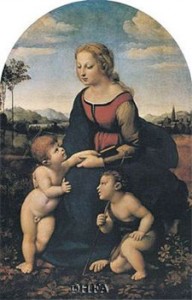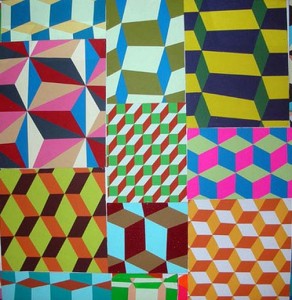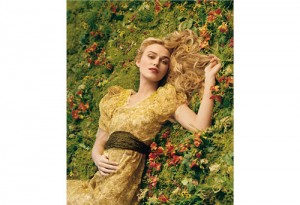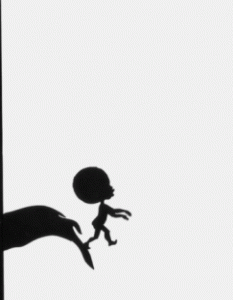Artists Stories
1. Do we define a place or does a place define us?
I think that it can go both ways. With certain people a place defines them and others define the place. Some artists need to work in certain environments. They may have music playing, certain lighting, and they all have their own methods of working. Pepon Osorio made places into specific time periods and he would also transform houses.
2. How is each of the featured artists influenced by particular places? How is this influence reflected in the artist’s work?
Richard Serra used big spaces. How this influence reflected the artists work is that he had very large pieces. He wanted people’s eyes to move around the art. His work is influenced by his work in stell mills and shipyards when he was younger. Pepon Osorio would turn houses into certain time periods, and in one case he made a whole house “plastified.” His work is influenced by him working as a social worker in the Bronx. Sally Mann is inspired by 19th century photographs. Her work is influenced by old cameras, and she often uses the cameras that have glass with them. They are often marked by scratches. Margaret Kilgallen and Barry McGee were street artists and they also painted compositions on walls in buildings. Margaret’s work is influenced by folklore and Barry’s work is influenced by contemporary urban culture. How this is reflected in Margaret’s work is that her paintings usually have women walking etc. independently. How this is reflected in Barry’s work is that it shows spray paint cans, and empty beer bottles.
3. Which artist do you feel most connected to and why?
I felt most connected to Sally Mann. Even though she was a little off mentally, her photography was amazing. I have always wanted an old camera because the quality of the photos is just amazing. Yes, you can do much more with digital cameras now, but there is just something about using film that makes me feel happy. She explained how art is her life and her passion and when it made me think of myself. Much of her work reminds me of my favorite photographer Annie Leibovitz because of the tension in her photos. Another reason why I felt most connected to Sally Mann was because she isn’t scared to create whatever she wants. She doesn’t care what other people think and she used whoever she wanted. I want to do that with my work, but I am still in the mode of people telling me what to do with my art. Hopefully, I will be as good as that some day.
4.When you were young, was there a place that interested you? A place that scared you? List five places from your childhood. Use one word to describe each of them.
Tree in my backyard for climbing- Adventure
Aunt’s house in Florida- Vacation
School- Hell
Softball field- home
My bedroom- Serenity
5. Pick one of those places. Try and remember it as well as you can. Answer these questions about it… What objects occupy that place? What are the textures and sizes of those objects? What was the lighting like? Was it a dark dreary place? Or a bright happy one?
The objects that occupied my bedroom were my bed, dresser, TV stand, and all of my other material possessions. They are all larger objects. The texture of my bed is softness, but the headboard and my dresser were made out of wood, so I would get a grainy feel out of it. The TV stand is made out of a sort of plastic wood so it was smooth. During the day my room was very bright because I have a large window in the middle of the outside wall. At night it was fairly dark, but I had a touch lamp, so I could get up to three values of light. It was a bright happy place because when I was younger, I was obsessed with the color pink. Ironically now, I only like a few shades of pink. I think all of my love for the color was used up when I was younger. It was also happy because I had all of my art work on the walls and they usually had vivid colors on them.
My stories
1. What are the important stories that are told in our society today in books, movies, pictures, music, and new, or by friends and family? Consider if you could personally gaurantee a single story to be passed down to future generations what would that story be what form would it take and why?
Stories that are told today are love stories, comedies, and action. Every time a story is redone, it is altered in some way. I like this because it means that everybody makes it their own. The story that I would pass down would be Romeo and Juliet. The form that it would take would be orally because when the story would be told there would be more emotion involved rather than just reading it in a book.
2. Why are some stories told, as opposed to others? Why do some stories continue to be told over time while other are lost?
Some stories are told more as opposed to others because they are more interesting. It is all about preference and if a story is boring and tends to drag on, nobody is going to want to listen to it and nobody is going to want to tell it. Also, stories that have interesting characters, endings, and plots are more likely to be told over time. People are interested in drama, we thrive on it and stories are the perfect way to satisfy that need without actually having to deal with drama in our own lives.
3. How do the artists featured in Stories use journals of sketchbooks in their artistic processes? Is a journal or sketchbook a work of art? Why or Why not?
They document what they see. Richard Serra would carry a sketchbook around with him everywhere and when he would see something that inspired him, he would just take it out and start to roughly sketch everything. Journals and sketchbooks are works of art. Writing is a form of art and sketchbooks are works of art because something was created. Anytime something is created, it is art.
4. Each artist in this hour describes an even or element in his or her childhood that resonates in current work. Do you remember a time when you were 5,10, or 15 years younger. Please record, in a present tense voice, the experience that were important at that time. How did you spend your days? What did you dream about? What emotions did you feel? Write a self-description in your childhood voice, followed by a second description of yourself at the age from the point of view you have now.
An element from my childhood that resonates in my work is when I got my first camera. It was a camera from Kraft Macaroni and Cheese. It had the Kraft dinosaur on it and it was orange like macaroni and cheese. To put the film inside the camera, you had to slide it over. The film wasn’t like it is now, it was in the shape of a small telephone and it snapped into place. I would take it everywhere and take pictures of anything and everything. Usually the pictures sucked but my mom and others would encourage me and say “Those are very nice Stacey!” and I would just smile and take more pictures. I was about 5 years old when I got that camera from my mom and dad and I was so excited. I spent my days just snapping pictures. I dreamed about being a professional photographer. When I was younger I didn’t know that it could be a career so I would just say “Mommy, I want to be a picture taker when I grow up.” I felt every happy emotion possible in this experience.
5 year old voice: I got a new camera today. It has the macaroni guy on it. It’s fun and I like to take pictures of stuff. I’m really happy that my mommy and daddy got me a camera! I want to be a picture taker when i grow up. It would be fun.
Having my first camera at a really young age jump started my love for photography. Over the years I have grown to love art and appreciate it even more. I have always loved taking pictures and I will never forget my Macaroni and Cheese Camera or my Coca-Cola camera.








